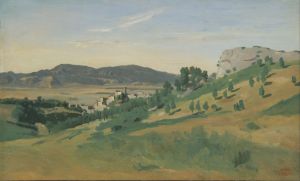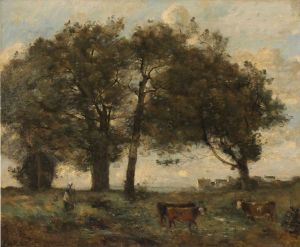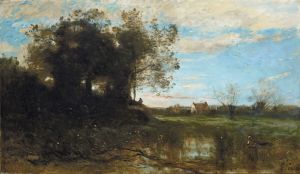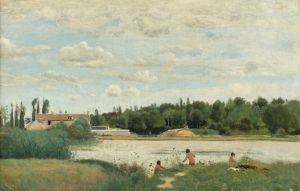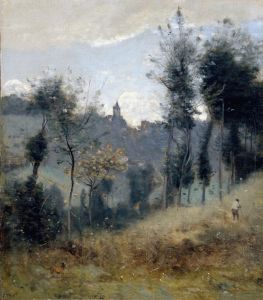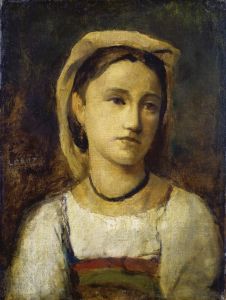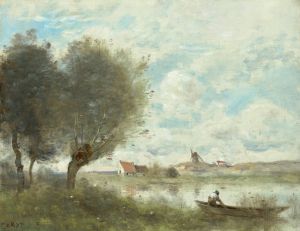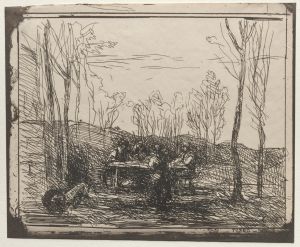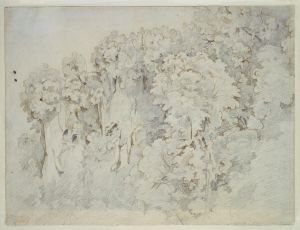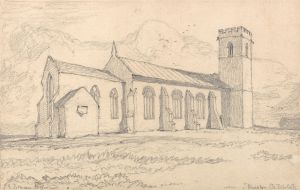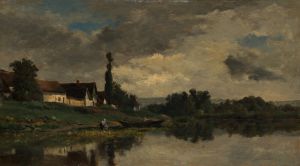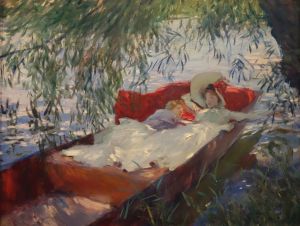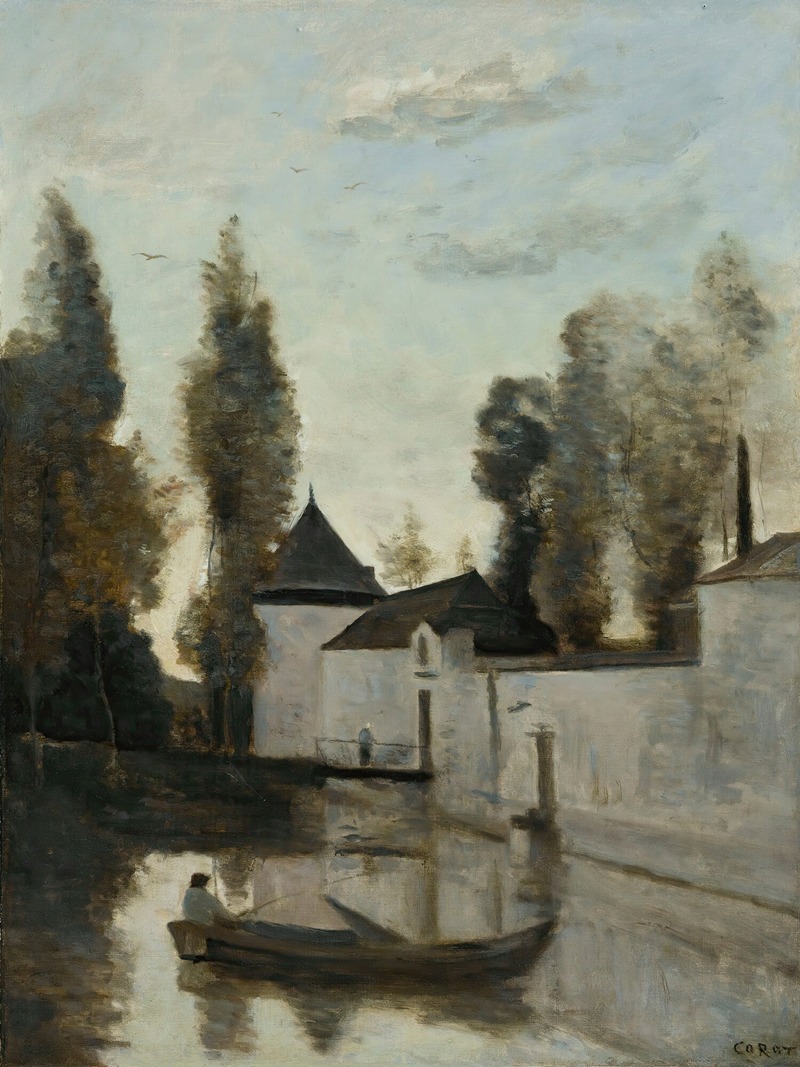
Beaune La Rolande. Le Château De La Motte-Bastille
A hand-painted replica of Jean-Baptiste-Camille Corot’s masterpiece Beaune La Rolande. Le Château De La Motte-Bastille, meticulously crafted by professional artists to capture the true essence of the original. Each piece is created with museum-quality canvas and rare mineral pigments, carefully painted by experienced artists with delicate brushstrokes and rich, layered colors to perfectly recreate the texture of the original artwork. Unlike machine-printed reproductions, this hand-painted version brings the painting to life, infused with the artist’s emotions and skill in every stroke. Whether for personal collection or home decoration, it instantly elevates the artistic atmosphere of any space.
Jean-Baptiste-Camille Corot was a prominent French landscape painter and a pivotal figure in the transition from traditional Neoclassical painting to the innovations of Impressionism. His work, "Beaune La Rolande. Le Château De La Motte-Bastille," is one of the many landscapes he painted during his prolific career. Corot is known for his ability to capture the natural beauty and atmosphere of the French countryside, and this painting is a testament to his skill and artistic vision.
"Beaune La Rolande. Le Château De La Motte-Bastille" depicts a scene from the small commune of Beaune-la-Rolande, located in the Loiret department in north-central France. The painting showcases the Château de la Motte, a historical structure that adds a sense of depth and history to the landscape. Corot's work often features a harmonious blend of architecture and nature, and this painting is no exception. The château is nestled within a serene landscape, characterized by lush greenery and a tranquil sky, which are hallmarks of Corot's style.
Corot's technique in this painting reflects his mastery of light and shadow, as well as his ability to convey the mood of a particular moment. His brushwork is both delicate and expressive, capturing the subtle variations in light that play across the landscape. This attention to detail and atmosphere is what sets Corot apart from many of his contemporaries and has earned him a lasting place in the history of art.
The painting is also notable for its composition, which guides the viewer's eye through the scene in a natural and unforced manner. The placement of the château within the landscape is carefully considered, creating a sense of balance and harmony that is characteristic of Corot's work. The use of color is restrained yet effective, with a palette that enhances the natural beauty of the scene without overwhelming it.
Corot's influence on later artists, particularly the Impressionists, is well-documented. His ability to capture the essence of a landscape with simplicity and elegance inspired many painters who followed him. While Corot himself remained somewhat traditional in his approach, his work laid the groundwork for the more radical departures from convention that would come to define Impressionism.
"Beaune La Rolande. Le Château De La Motte-Bastille" is a fine example of Corot's mature style, where his early influences and later innovations converge. It reflects his deep appreciation for the French landscape and his skill in rendering it with both fidelity and artistic interpretation. The painting remains an important piece within Corot's oeuvre, demonstrating his contribution to the development of landscape painting in the 19th century.
Today, Corot's works are celebrated for their timeless beauty and technical excellence. They continue to be studied and admired by art historians, students, and enthusiasts alike. "Beaune La Rolande. Le Château De La Motte-Bastille" is a testament to Corot's enduring legacy and his role in shaping the course of modern art.






